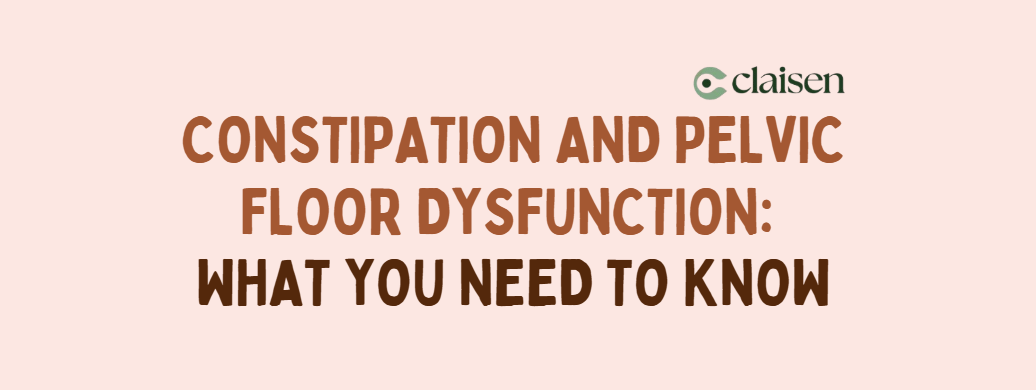
Pelvic Floor Dysfunction & Constipation: What to Know
|
|
Time to read 4 min
|
|
Time to read 4 min
Constipation is a widespread health issue, affecting millions globally. However, many don't consider it seriously and dismiss their symptoms.
This symptom might even signal to a deeper problem: pelvic floor dysfunction.
This blog includes what pelvic floor dysfunction really is, the Relation between Pelvic Floor Dysfunction and Constipation, what its symptoms and causes are, and simple exercises, toilet postures, and lifestyle modifications to help you manage it effectively.
Already tired of scrolling through blogs and wondering what might work for you?
Don't worry, Claisen got you covered!
The pelvic floor is a group of muscles and connective tissues at the bottom of the pelvis, supporting important organs like the rectum, bladder, uterus, and vagina (in women)
A well-functioning pelvic floor alternates between contraction and relaxation:
Contraction supports organs and helps control over urinary bladder.
Relaxation allows for bowel movements and urination
#Up to 50% of people with chronic constipation may have pelvic floor dysfunction
Pelvic floor dysfunction occurs when these muscles fail to contract and relax as needed. This usually happens due to two problems:
Hypertonic (too tight) muscles: The pelvic floor remains contracted and does not relax during defecation, creating a blockage.
Weak or poorly coordinated muscles: The pelvic floor doesn't contract and relax with proper timing or strength, leading to incomplete emptying.
Let Claisen take the guesswork out of your routine with personalized solutions designed to target your problem at its root, so you can feel better, faster.
Trauma, overstretching, or injury to pelvic tissues during birth during deliveries can weaken the pelvic floor
Repeated straining can cause the pelvic floor to become tight and uncoordinated, increasing the risk of constipation
Excess weight adds pressure to pelvic tissues, weakening muscles and pelvic floor over time.
Stress, anxiety, and hormonal changes as women age can also lead to muscle clenching and add pressure on the pelvic floor.
Struggling with Constipation, Heartburn or Bloating? Checkout our other blogs too!
Improper toilet posture can contribute to constipation by preventing full relaxation of the pelvic floor.
Squatting (or mimicking it using a footstool) places the pelvic floor in its optimal alignment.
Lean-Forward Posture: Sit upright, then lean slightly forward from the hips. Keep your elbows on your knees.
Pelvic Tilt Sitting: While seated, gently move your pelvis forward and backward. This helps reduce pelvic floor tension.
Sometimes, making lifestyle and dietary modifications, exercising, or looking over optimal toilet postures might not be able to help you with your Pelvic floor dysfunction and the Constipation caused by it.
You might even need to take professional pelvic floor therapies to help ease your discomfort and pain.
You don’t have to navigate this alone
Claisen got you covered!
Claisen is a 100% online platform designed to provide personalized relief for bloating, gas, and heartburn: perfect for expecting moms looking for safe and effective options.
With Claisen, you can skip the guesswork and get instant relief.
Toileting posture matters: Use a stool for squatting position and let your muscles relax.
Lifestyle changes: hydration, fiber, activity, posture, amplify the effect of therapy.
Skip the guesswork with people who claim they have a "solution". Get a personalized relief plan that stops the cause of your pregnancy constipation.
If you are straining excessively, feel like you never fully empty, or cannot find relief from dietary modifications, your constipation could involve pelvic floor dysfunction.
Drink a full glass of water with bulk-forming laxatives to prevent constipation from getting worse
Yes, if your pelvic floor is too tight or overactive , more strengthening may actually worsen constipation.
Chronic constipation lasting more than a few weeks
Pelvic pain, urinary issues, or unresolved symptoms even after implementing lifestyle modifications



